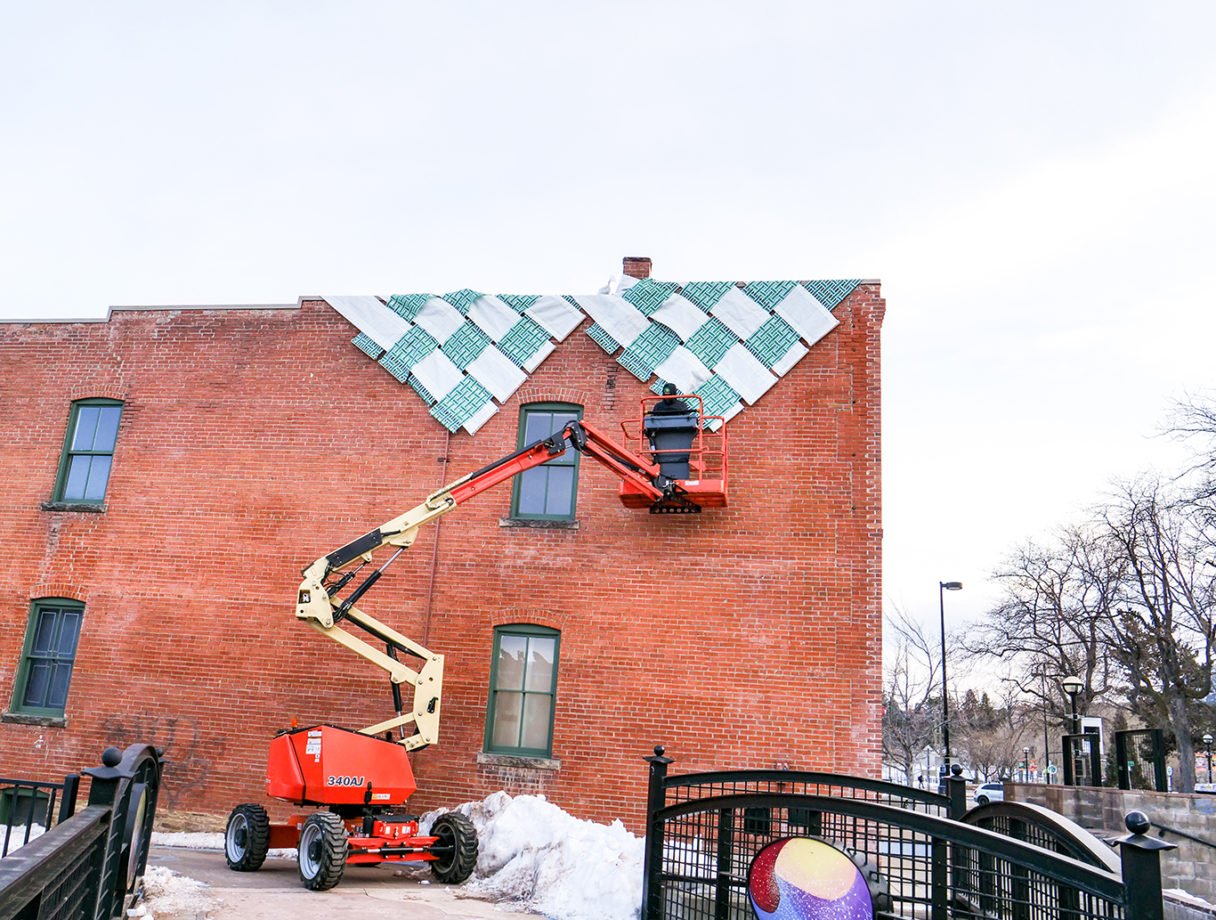
Helen and Alice at the Museum (2020)
Helen & Alice at the Museum 2020, Commissioned for the Boulder Museum of Contemporary Art (BMOCA) as part of the Inside/Out Series and on hung on the outside of the museum from February 2020 - March 2021.
It was also part of the exhibition Splendid Notions | Queer Textiles at the University of Northern Colorado from November - December 2022. Curated by Bri Murphy and Belle-Pilar Fleming.
Plastic webbing, landscape fabric, wood, and t-pins
288” X 84” X 36”
Frost was inspired by a collection of photos that featured their Great Aunt Helen and her partner of 40+ years, Alice. In photo after photo, each could be seen alone in their suburban Massachusetts home looking at the other through the lens of the camera but never standing together. Always seen in these photos was a pair of two ordinary lawn chairs, which the artist interpreted as a stand-in for them. Following their desire to see Helen and Alice together, Frost wove ordinary landscape fabric and plastic webbing found on lawn chairs to create, Helen and Alice at the Museum. Using the queer motif of the inverted triangle Frost’s ode to their relatives utilizes scale to exaggerate a simple woven pattern and give Helen and Alice a looming presence in the gallery that moves their partnership from the margins of history and into a conversation about people who defied the conventions of their time in this elevated tribute to their partnership.
Exhibition essay by artist and curator, Kate Petley:
“In their new large-scale installation for the Boulder Museum of Contemporary Art, Frost elevates the personal story of their Aunt Helen and her partner Alice to a position that cannot be overlooked. Draped over the second story of the historic brick building, an enormous green and white woven grid partially covers the exterior walls. Imagination might dictate that it also blankets the roof, although this is not the case. Using plastic webbing as found on ordinary lawn chairs, Frost exaggerates this common pattern to an almost aggressive level. They push color and scale to create maximum volume, while simultaneously telling the tender story of a lifelong partnership and simple backyard pleasure. The contrast between the dramatic wrap of the building and the intimate personal history that motivates Frost is key to the experience of this work.
Seen from the ground below, the gridded weave has an intensity that welcomes questioning visitors with several possible interpretations. Activism, storytelling, performance, and rigorous pursuit of loud color are included in the mix of possible readings for this epic tribute to a lawn chair.
We are drawn into the story laid out above our heads through Frost’s adept use of materials that immediately garners our attention. Texture plays a role in our perception; unreachable and barely visible from the ground, the plastic weaving feels familiar to our senses. Our own memories of these webbed chairs are called up, as we see one that is bigger than life, waving overhead.
Frost literally weaves together ideas, people, and materials in celebration of the personally political. Their use of color is intentionally brash, their references real and poignant.”*
*Portions of this essay were edited for context and format.







